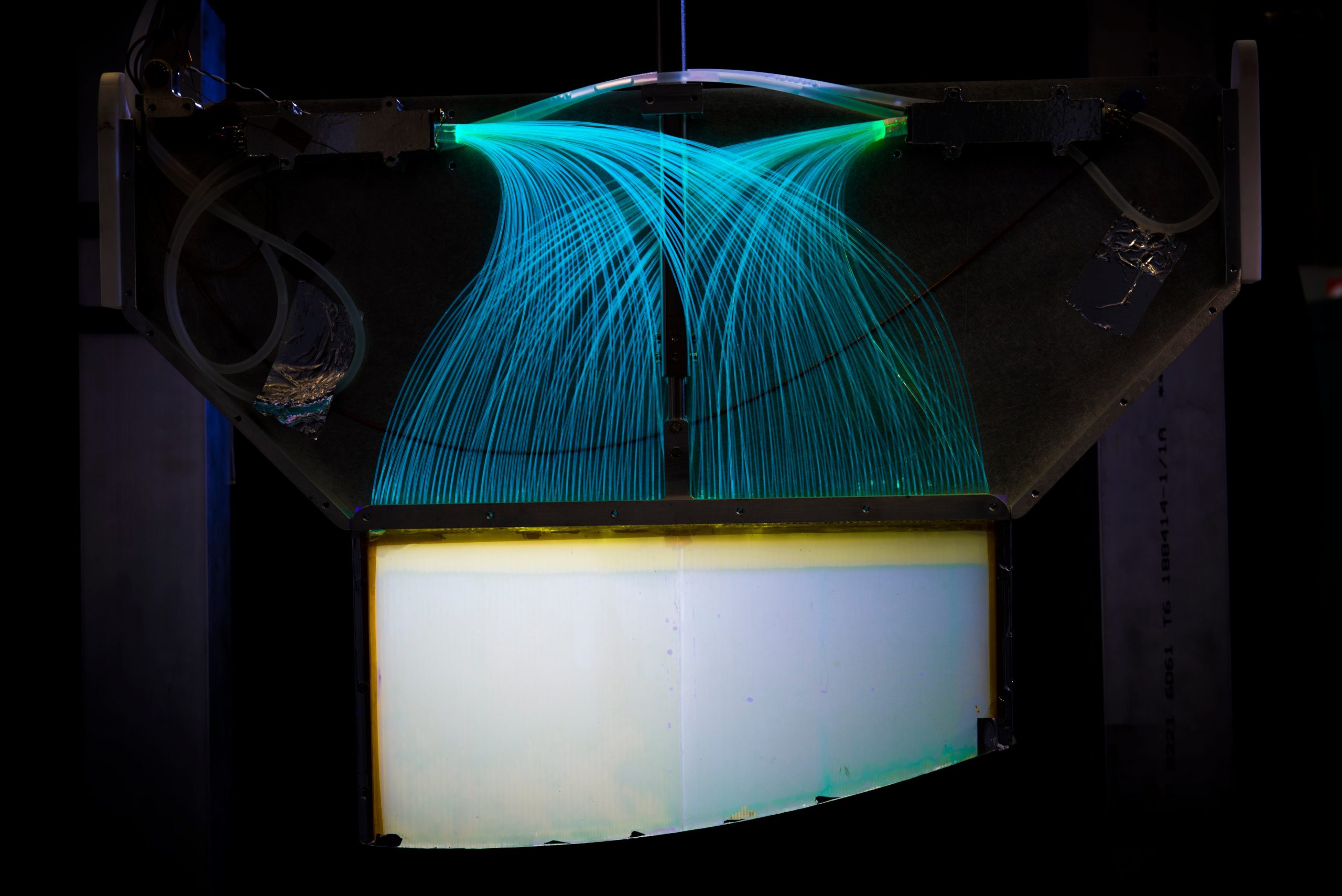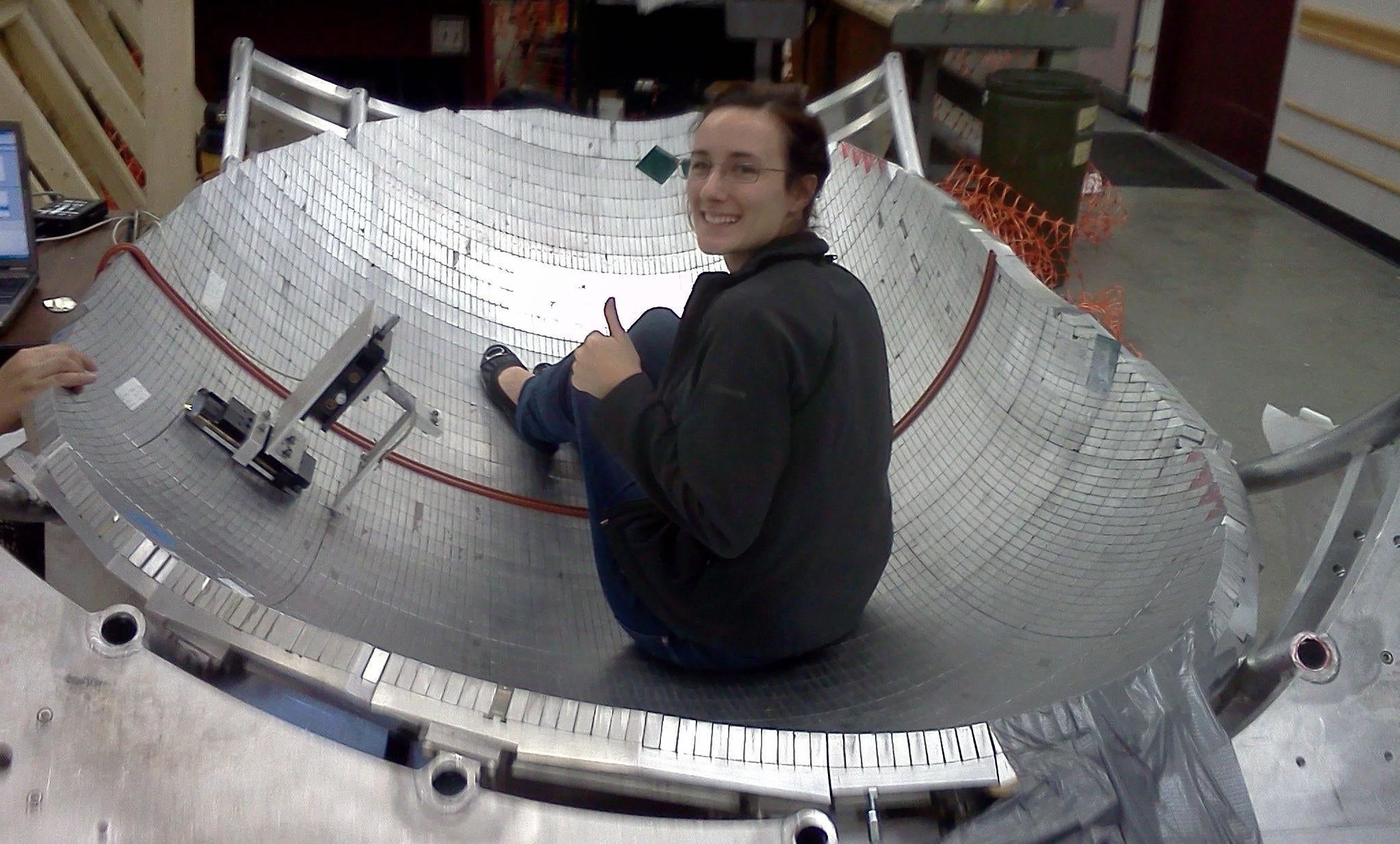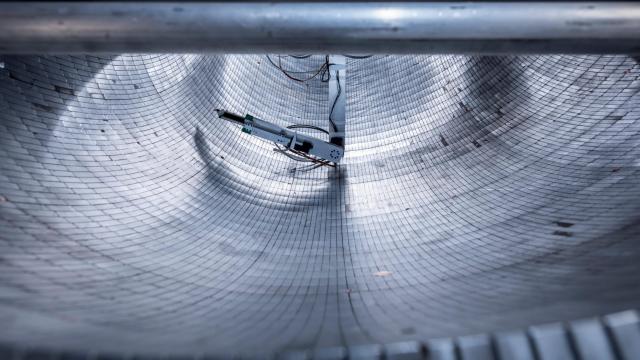An international team of researchers recently measured the lifetime of a neutron outside of an atomic nucleus with extraordinary precision. By their measurements, the neutron survived for 14.629 minutes, or 877.75 seconds, give or take a third of a second.
Neutrons are not alive. But the particles — integral components of the nuclei of atoms — do decay, into positively charged protons and other particles. Neutrons outside of atoms are called free neutrons, and the timing of their decay is a crucial thing to know for physicists trying to understand how many neutrons were available to form the first atomic nuclei in the extremely early universe; different numbers of neutrons then would result in very different amounts of the elements we find in the universe today, the elements that gave rise to life.
Scientists have known for years that a lonely neutron will die in about a quarter-hour, dating back to the original measurement of a free neutron’s decay in 1951. But the new measurement — the result of years of experimentation in the UNCtau apparatus at the Los Alamos Neutron Science Centre — is the most precise yet of its kind. The team’s results were published last week in Physical Review Letters.
The paper is “a very impressive result,” said Shannon Hoogerheide, a physicist with the National Institute of Standards and Technology who wasn’t involved in the new research. “The UCNtau team has done a great job of carefully addressing a range of systematic uncertainties in their experiment, and the independent, blinded analyses lend confidence to the result. The result is an important step toward improving tests of the Standard Model.”
The finding “provides an independent assessment to help settle the neutron lifetime puzzle,” said Brad Filippone, a physicist at the California Institute of Technology and a co-author of the paper, in an institute press release. “When combined with other precision measurements, this result could provide the much-searched-for evidence for the discovery of new physics.”

This isn’t the last word when it comes to how long a free neutron lives. Hardly. There are actually two long-standing methods for measuring a neutron’s lifespan. One, the beam method, looks at a beam of neutrons and counts the number of protons that appear as the neutrons decay. The other, the bottle method, traps free neutrons in a big, cold, magnetized bowl (or bottle) and counts the number of neutrons that remain.
“The bottle experiment measures the survivors, the beam experiment measures the dead,” Geoff Greene, a physicist at the University of Tennessee and Oak Ridge National Laboratory who was unaffiliated with the recent research, told the Department of Energy last year. “The bottle experiment sounds easy but actually is very hard. On the other hand, the beam experiment sounds hard and is hard.”
The beam method reliably produces results that are about nine seconds longer than the bottle method; the discrepancy is large enough that the error bars of the two methods don’t overlap. Physicists don’t know whether this mismatch is a sign of new physics that no one yet understands.
Because the bottle method measures surviving neutrons, it by definition ignores whatever happens to the neutrons when they decay. Beam experiments, on the other hand, are specifically measuring the decay products (in this case, protons). If new physics were at play, it could mean the neutrons would decay by some other means (what physicists call “channels”) besides beta decay, Greene told Gizmodo in a phone call, yielding particles besides protons that remain hypothetical: axions, dark matter, WIMPS — take your pick.
“What’s tantalising about this and has driven people nuts for the last 15 years,” Greene explained, “is that it would predict that bottle lifetime would be lower, because there’s another channel, than the beam lifetime.”
If the answer for the discrepancy were indeed new physics, beam and bottle experimentalists would only know after proving again and again that their respective experiments were free of uncertainty and that there wasn’t some larger systematic error at play.
We’re a long way off from such realisations; most physicists aren’t the type to cry wolf, and if any did think that this lifespan discrepancy was evidence that neutrons could decay by some other means, they’d have to make sure it was consistently provable in every other experiment that involves nuclear beta decay.
“If you’re not paranoid, you shouldn’t be doing this kind of work,” Greene said.
For now, physicists keep plugging away at the error bars on the beam and bottle methods, trying to figure out what the results are telling them. Once the fat is trimmed, the scientists might be able to determine what else could be causing the nine-second disparity. The new experiment is the most precise measurement yet taken with bottle method, for a couple of reasons.
“Our technique is distinguished from other ‘bottle’ measurements by both being a magnetic neutron trap, and by detecting the neutrons within that trap,” said Daniel Salvat, a physicist at Indiana University Bloomington and a co-author of the new study, in an email. “This result uses a completely new and separate dataset from our previous result, and these data were blinded, so that we couldn’t be swayed towards our previous, less precise result.”
The team’s final calculation for the neutron decay was an unweighted average of three separate blinded analyses. “The blinding is an excellent technique,” Greene said, noting that blinding doesn’t help if there is some systematic effect like a hole in the bottle, which would allow the team to lose neutrons by another method besides decay.
“But these are very careful people who work very hard at this. I’ve been observing their work for 20 years and I don’t see an obvious error in what they’ve done,” said Greene, who is a beam scientist, adding that “I don’t see an obvious error in what we’ve done.”

Beam experiments have yielded pretty consistent results as they’ve gotten more precise, Greene said. Previous bottle method measurements of such cold neutrons yielded slightly longer lifespans, and the magnetogravitational trap used by the recent team makes their value for the neutron’s lifespan a little shorter.
It’s somewhat counterintuitive that ultracold neutrons are being used to help us understand how long neutrons lasted at the extraordinarily hot onset of the universe. In the beginning, light elements formed from a primordial soup of superheated particles. This process, called Big Bang nucleosynthesis, would’ve happened on different timescales, depending on how long free neutrons stuck around.
“In the first microseconds of the universe, it was so hot that there were no protons, neutrons, or nuclei, but rather a ‘quark soup,’” Salvat said. “Shortly thereafter, the quarks condensed into the droplets that we know as protons and neutrons.”
“After a few seconds, the universe started cooling off enough that the protons and neutrons could stick together, forming the light elements hydrogen, helium, and lithium,” he explained. “If the lifetime of the neutron were very short, all the neutrons would quickly become protons, and we’d only end up with hydrogen in the early universe. That’s not what we observe — the neutrons last more like 15 minutes.”
Besides the pace of the early universe’s development, the lifetime of neutrons has implications for physicists probing dark matter, solar fusion, and the Standard Model of physics. But in order to grasp all of those things, first researchers need to figure out why these neutrons seem to be decaying at different times.
